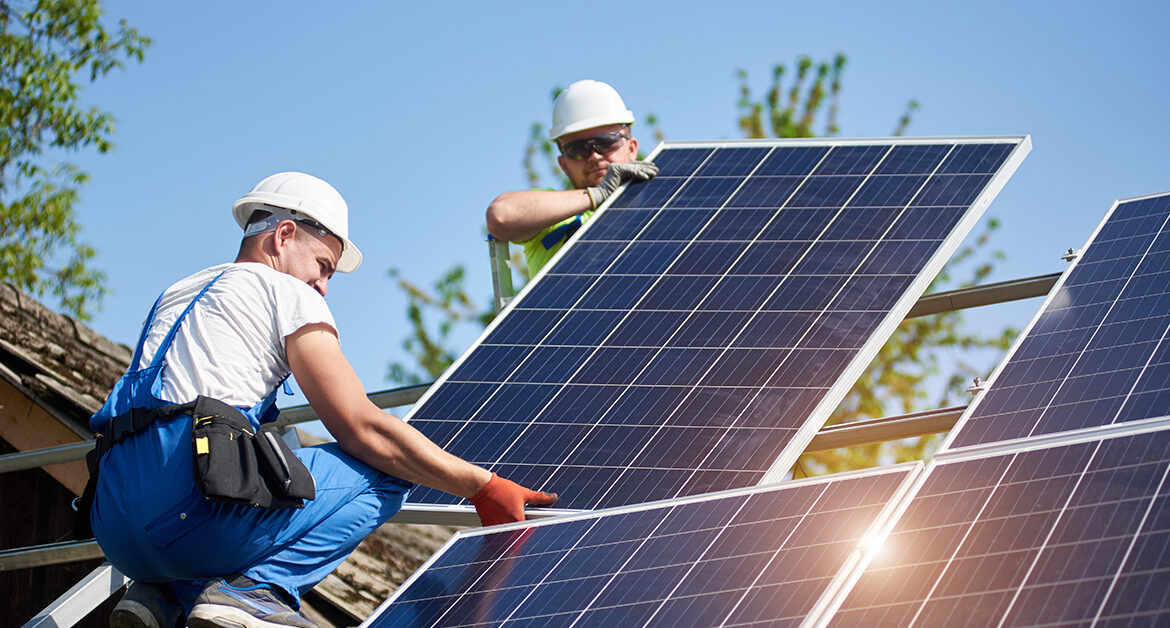A photovoltaic system is a technology that converts sunlight into electricity using solar cells. This clean, renewable energy offers numerous benefits.
First, it helps reduce dependence on non-renewable energy sources, reducing carbon emissions and contributing to environmental sustainability.
Additionally, photovoltaic systems can significantly reduce electricity costs in the long run, saving consumers money and providing energy independence.
This energy source is also low-maintenance and durable, making it an attractive option for homes and businesses looking for a sustainable and cost-effective alternative.
Let's learn what the main components of a photovoltaic system are. Then keep reading!
Solar panel: learn about on-grid, off-grid and hybrid systems
To fully understand the main components of a photovoltaic system, it's essential to recognize the existence of three types: on-grid, off-grid, and hybrid. It's worth noting that the components can vary depending on the type of system chosen. Take a look!
● On-Grid System: In this system, solar installations are connected to the conventional power grid. The generated electricity is then used locally, and the excess is sent back to the grid, often resulting in credits on the energy bill. Therefore, it is an economical option and suitable for urban areas with grid access;
● Off-Grid System: This system is independent of the electrical grid. Therefore, all the electricity generated by the solar panels is stored in batteries for later use, making it ideal for remote locations where there is no access to conventional electricity.
● Hybrid System: It combines elements of on-grid and off-grid systems, allowing connection to the power grid but also featuring batteries for storage. This way, it offers flexibility and reliability, especially in regions with grid instability.
>> You may also like to read: Solar energy: differences between on-grid, off-grid and hybrid
See what are the main components of a photovoltaic system
Photovoltaic systems are composed of several components that work together to transform sunlight into usable electricity. Learn about the main components.
● solar panels: are the core of the system, absorbing sunlight and converting it into electricity. Thus, the number of panels is sized according to energy needs.
● solar inverter: It converts the direct current (DC) generated by solar panels into usable alternating current (AC), compatible with household appliances. In on-grid systems, it also synchronizes production with the power grid.
● battery bank: In off-grid or hybrid systems, batteries store energy for use when sunlight is not available. This way, they act as a backup and ensure continuous power;
● charge controller: In off-grid and hybrid systems, the charge controller regulates the flow of energy to the batteries. It prevents overcharging or over-discharging and extends battery life;
● fixing structures: support solar panels (whether on the roof or on the ground). Therefore, they are usually made of aluminum or stainless steel for weather resistance;
● cabling: Electrical cables conduct power between system components, ensuring efficient electricity flow. These flexible cables are suitable for use in photovoltaic systems.
● monitoring: Although not mandatory, monitoring allows you to monitor system performance, detect problems and measure energy generation;
● protections: To ensure system safety, protections are included. For example, the String Box, which protects against short circuits and lightning;
● connectors: are responsible for connecting the solar cables to the photovoltaic modules and inverters.
Photovoltaic system is in Three-Phase Electricity
So, did you enjoy learning more about the subject?
Did you know that Trifásica Elétrica offers a complete solar solution for capturing and generating photovoltaic energy? Plus, we offer a nationwide warranty, superior quality, and reduced turnaround times.
So contact us today to start your journey to clean, sustainable energy.
Contact our sales team on one of our channels.Follow our social media: Facebook, Instagram, LinkedIn and YouTube.

